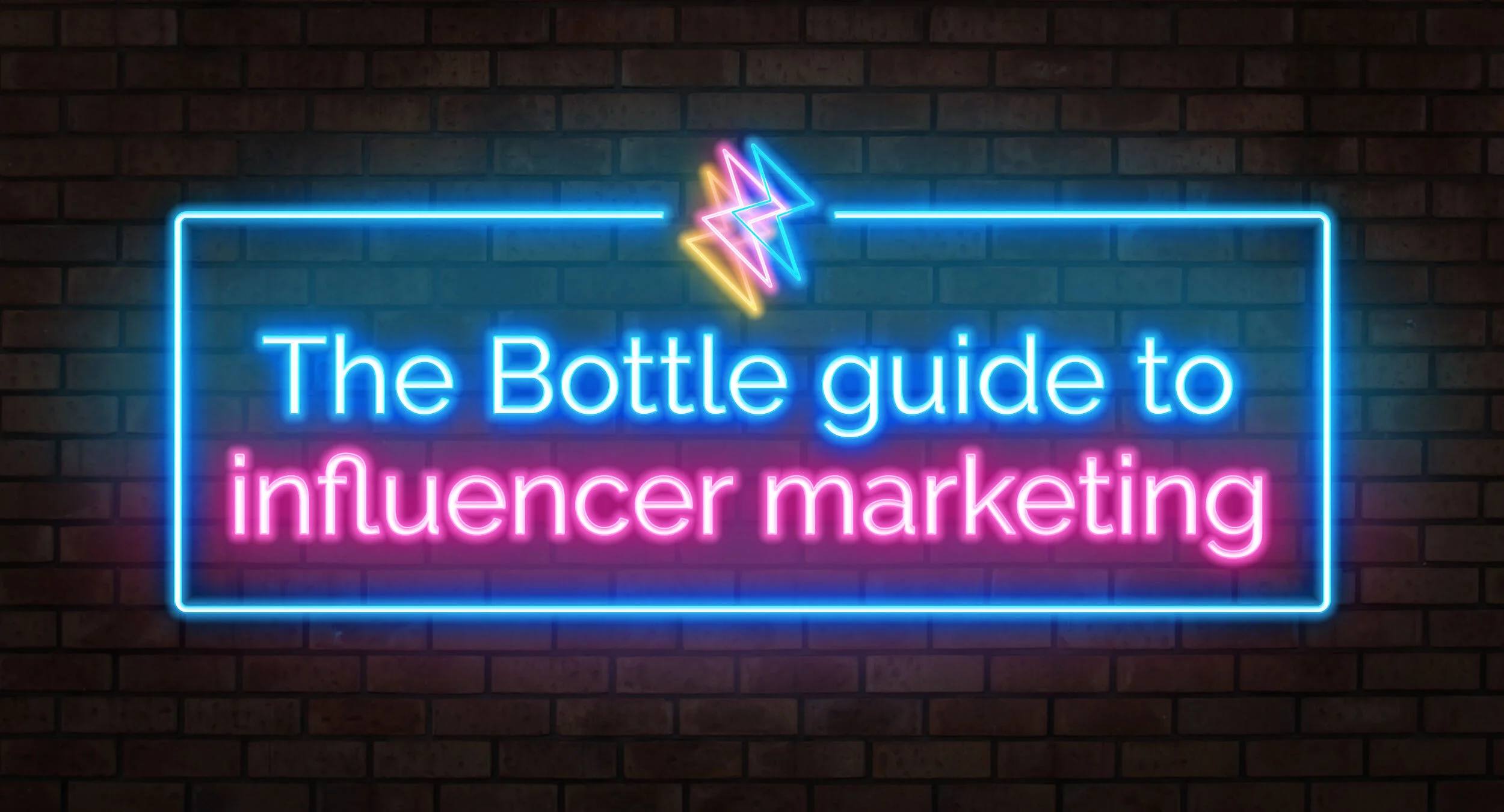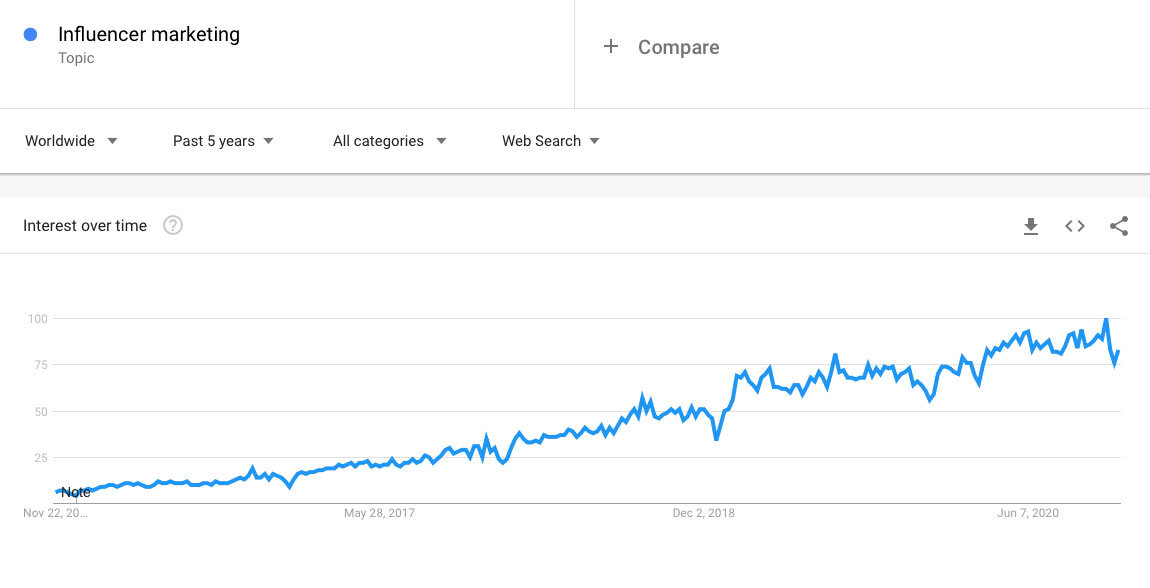The Bottle Guide to Influencer Marketing
By: Sophie Moore | Senior Digital Planner
Influencer Marketing has enormous #clout for brand building / brands’ growth objectives and it’s becoming an essential tactic for many businesses digital pr & marketing strategies. We’re not kidding either. Google searches for ‘influencer marketing’ have increased 1500% in just 3 years.
Via Google Trends
Whether you’ve only dipped your toe in the water with this marketing tactic so far, or whether it’s already part of your to-do list but you still want to know how to be a total pro, this comprehensive guide will teach newbies, as well as refresh marketeers, at all levels.
To start with, let’s answer some FAQs…
What is influencer marketing?
Influencer marketing is the collaboration between brands and socially influential individuals. Brands work with these social folks to reach their network of followers to promote their products and services, build increased brand awareness and drive traffic to the website amongst a target market. Not a bad deal really, considering that partnerships with said folks can work towards some pretty hefty business goals.
The tactic involves finding appropriate individuals (or collectives), on relevant social platforms, starting a relationship with them, and then incentivising them (either with drool-enducing gifts or a little bit of dough), so that they tell their community about you and whatever it is your brand wants to share. They can create content that can be shared. Ultimately, to support you in your quest to find potential customers.
Why is influencer marketing important for brands?
Quite simply, people buy from people. And this is true whether you’re in D2C or B2B.
There’s been growing consumer sentiment for brands to have more of a #relatable voice, and personality for some time now. Partnering with influencers, gives brands a perfect platform for actioning this.
At a time (by which we mean the current pandemic), when brand building and audience engagement is key for growth, influencer marketing is giving brands that essential means to reach its target customer, in a more meaningful way. Especially, whilst those audiences are very much captivated at home, with not much else to do than scroll through their devices.
Does influencer marketing work?
Yes, is the answer. This approach has continued to work successfully for brand (and sales) growth over the last decade. And that includes all businesses, from start-ups to the major household names.
Mostly this can be attributed to the high amount of trust social media influencers have built up with their following. So, their recommendation of a brand or its product serves as some sort of social proof to the consumer. Making their role highly influential in the purchase journey.
Has influencer marketing changed in the last decade?
With the industry expected to grow to approximately $10bn by the end of 2020, there’s a lot more of an opportunity (and a lot more to consider) now, than the millennial pink backdrops and avocado on toast posts our feeds were filled with just a few years ago.
Today’s popular social media platforms, like YouTube and TikTok, have given rise to a new breed of influencers expanding the industry even further. And so, have how our audiences’ behaviours making it ever more important to partner with the right influencers for your brand. Dancing, pranks and challenges, gaming, lifestyle and fitness have been the go-to’s for 2020.
Ok, now’s time to grab yourself an oat milk latte, and we’ll move on to the doing part of this guide…
HOW TO PART 1:
Sourcing the right influencer
With the rise of influencer marketing, the role for digital PR agencies has shifted from prioritising pitching stories to traditional media, to working with influential individuals across multiple online platforms.
Luckily for you, this process isn’t our first rodeo. So, we’ve broken down the planning process step-by-step.
CHOOSING THE RIGHT SOCIAL PLATFORM
The most popular social media channels where brands are collaborating with influencers right now are Instagram, Facebook, TikTok, Twitter, SnapChat and YouTube.
Picking one social platform will initially feel like a bit of a minefield so think about where conversations for your topic take place the most often. Conduct some light-touch social listening (Brandwatch is our tool of choice), scouring through relevant hashtags (by latest trending and volume size).
Then cross-ref the demographic breakdown for the channel that’s coming up top on that conversation list, making sure the reach potential of your target audience is at a maximum.
DECIDING ON THE TYPE OF INFLUENCER FOR YOU
The options are:
Mega Influencers – those with hundreds of thousands, if not millions of followers. Whilst working with the big celebrity (or macro) influencers might feel like it’s an easy (albeit expensive) way to reach millions, it doesn’t mean your brand is necessarily being “seen” by your target audience as they typically partner with a lot of brands. Their perceived brand loyalty is pretty low. Something to consider before making it rain.
Macro Influencers – those whose followings range between 10k and 100k. They have a considerable degree of influence amongst their followings, already have established brand connections in their niche and are experienced in creating seriously good content.
Micro Influencers – they have between 1k and 10k followers. They have a strong level of influence over their network and will still be building their list of brand partnerships which means you won’t be posted alongside your competitors’ tie-ups with them too.
Nano Influencers – the new rising stars of influencer with followers only up to 1,000. It may be a small audience, but it’s tight and highly engaged.
CONSIDERING NICHE AREAS OF INTEREST
The fashion and beauty industries may have been quick off the mark with partnerships for make-up tutorials and #LOTD, but now you can find collectives of influencers in all sorts of niche verticals.
We recommend choosing 3 niches, including the sector you’re in, your target audience and one other that’s relevant to the theme of your campaign. For example, for our recent #FeedTheBees campaign with Rowse, we focused on:
Brand sector – Food – Foodies - @rosiefoodie
Target audience – Millennial-mindset parents – Mum influencers - @thegeorgiaedit
Campaign theme – Horticulture – Gardeners - @mr_plantgeek
SCOUTING POSSIBLE (MEGA/MICRO/NANO) INFLUENCER PARTNERS
Start on your platform of choice, and more specifically, in your own account’s inbox. You may be surprised at how many people have already tried to work with you.
Look at who your competitor brands have been working with, click on them and wait for the platform to share similar suggestions.
Look up audience-relevant media’s annual ranking lists of influencers by sector.
Speak to influencer management agents (there are plenty out there). So often, they’ll have new influencer ideas for you that you hadn’t realised they had on their roster too.
Try out one of the many available tools you can access online.
And, as you start to narrow down your casting list of influencers, take some time to look at your edits and ask yourself can you trust them to deliver what’s in your deliverables list? For example, how often they post, they type of content they post, the variation of formats they create.
DON’T BE ARROGANT
Investigative outreach during your research phase is really important. You need to nurture the relationship before you put the partnership or campaign ask out there. Just because a social face appeals to your brand, doesn’t mean the feeling is mutual. Or even if it is, you still need to know in advance of an offer whether an influencer is already under an exclusive agreement with a competitor. If you’re agency side, it’s just the worst when you have to tell a client their favourite influencer that you proposed isn’t actually an option.
Just as if we’re in a spin class, need a break? Grab a water and then it’s time to move on to the next part…
HOW TO PART 2:
Collaborate effectively with influencers
Influence can be confused with popularity. Scott Guthrie has already said this in a way that doesn’t need re-writing so in his words; “Influence isn’t the same as popularity. Influence drives action. Influencers are change artists.”
What he’s saying (and we’re about to echo), is don’t command the content you want to be created and try following these rules of thumb instead…
THE BRIEF
Take time to explain your brand’s key messages, product/promotion and what objectives you’re aiming to achieve from a campaign both verbally (so nothing can get lost in translation) and in written form (so there is a continued point of reference).
The typed-out version of the brief should also clearly outline the following (and then be added to the contract):
Campaign message
Channel/s
Post deliverables and timeline (dates and get as granular as timings too so that followers’ eyes will see the posts at the influencer’s optimum time of day for engagement)
Deadlines for the creative content and captions to be submitted in advance for brand approval
Handles and hashtags that must be included in captions
Website links, or even better a UTM coded link to the site so you can better track the influencer’s performance
Agree up front with any influencer you partner with, to share screenshots of their post or story insights after an agreed time period so you can view engagement stats easily.
CREATIVE BOUNDARIES
Feel free to share the campaign mood board, and possibly even a post mock-up that you’ve created for your own brand social media channels. Then hand over the rest to them. They are the master of creating their own content. If you limit the influencer’s creative freedom, the less authentic it will appear to their followers, and the less likely the post is to achieve strong engagement.
Just to drum this message in a little harder, 90% of industry respondents say authenticity is critical to the future of influencer marketing, so take note and don’t spoil it.
NEGOTIATION
From the creative production, to the product you offer, to the budget pot for fees you have to spend, this process is a business transaction that works both ways, so make sure you both reap the benefits for the partnership. You’ll find the final quality to be much better this way too.
Beware of agency fees. You don’t want a nasty £surprise appearing on the invoice after the campaign. Make sure you agree whether this is to be included within the influencers fee, or separated out, at the time of contracting.
HOW TO PART 3:
Measuring ROI (or, Return of Influence)
Influencer marketing sits quite nicely between earned PR and paid for social advertising. This means the metrics we look at for these digital PR tactics are not dissimilar to those we like to look at for Influencer Marketing. Like other digital PR tactics, you can set clear performance goals.
Whilst 85% of marketeers cite engagement as the biggest metric of success for influencer marketing, as we noted earlier, influencers also play an important role in the purchase journey. It’s also common have traffic driving or sales goals so affiliate codes or UTM links are the way to go so you can see in GA exactly who brought audiences to your site.
Here’s where you can monitor the data…
REACH & ENGAGEMENT
Likes, comments, shares and volume of campaign hashtags on the relevant social media channels
TRAFFIC & SALES
Link clicks, swipe-to-shop and checking in your GA
SENTIMENT
Monitor the reactions, use of emojis and comments and assess whether the feedback is generally more positive, or more negative
Once your Influencer Campaign is complete, it’s important to go back over the results and evaluate its performance against the ROI metrics most relevant to your campaign. Use these learnings for your next influencer marketing activity so you can continue to better performance every time you collaborate.
Looking forward at the unknown of 2021, with purchasing behaviours changing at lightning speed, the nature of social commerce continues to redefine itself. Social platforms are still developing the shopping capabilities, so don’t sit around and wait for those to be perfected, keep working on your influencer marketing strategies, keep testing and learning, and keep being playful with your influencer campaign briefs, as right now this is a solid way to drive sales online.





